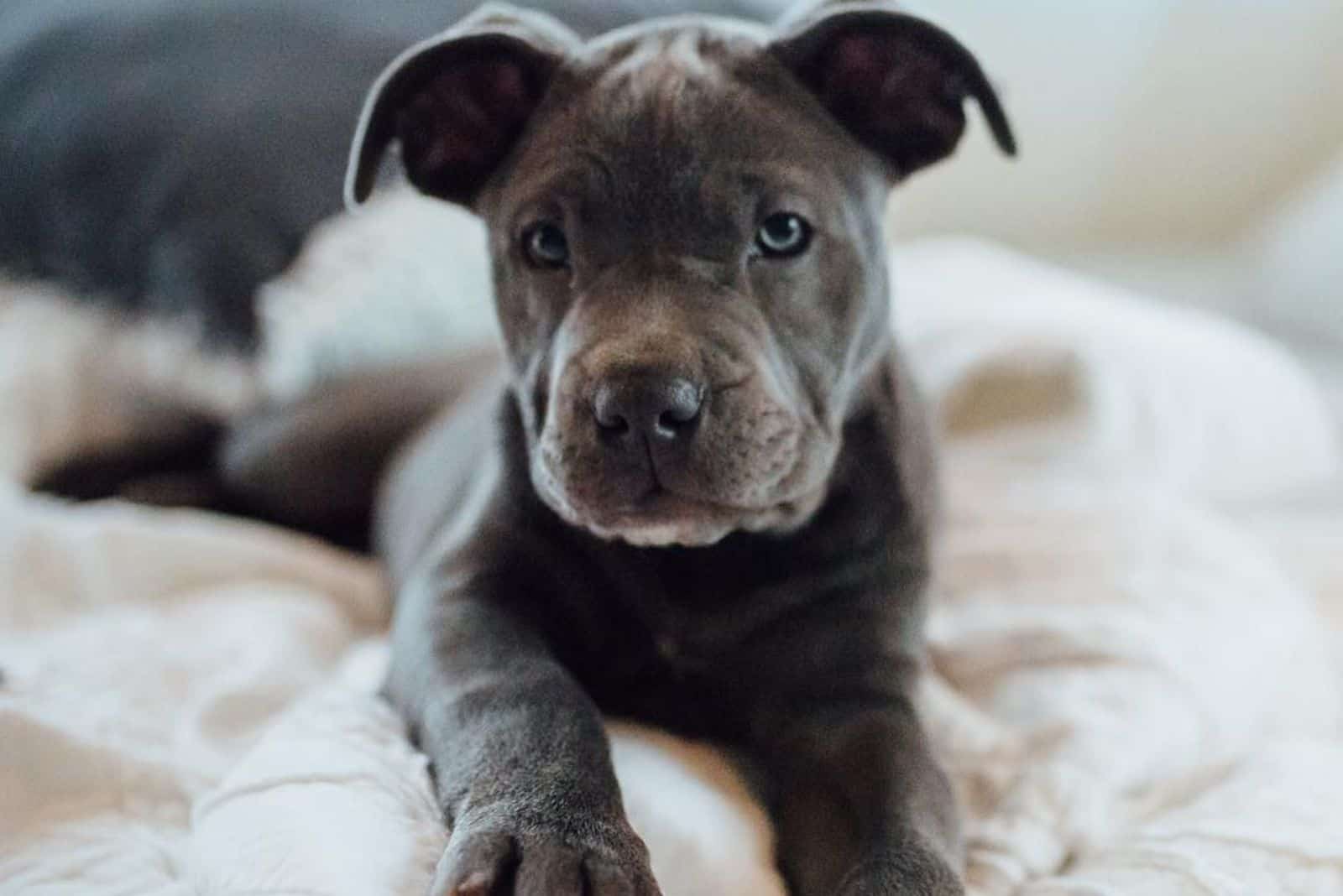Pitbulls are amazing animals that are often misunderstood because of their reputation. They’re often labeled as aggressive canines because of their past.
However, these wonderful canines have proven themselves as great family pets and guard dogs. Although they come in a variety of beautiful colors, the grey Pitbull stands out as one of the rarest pitties that catch everyone’s attention.
Although the color doesn’t signify any major change, there are some things that separate grey pits from others.
This article will reveal everything you need to know about the grey Pitbull, and pitties in general. Read on and discover what’s so special about this amazing dog!
Grey Pitbull: General Information
Pitbulls are generally described as aggressive dogs that are ready to attack at any time. Is this really true or do they just have bad PR?
First of all, it’s time to make clear that the grey Pitbull isn’t a breed of its own; it’s just a Pitbull with a grey coat and blue hue all over its body.
This type of Pitbull is quite unique because of the mutation that dilutes the black color. Therefore, don’t worry… your doggo isn’t old; it’s just a unique type of pigment.
Although there’s no significant difference between this doggie and the rest of the Pitbull family (except for the colors), the blue-hued, Grey Pitbull is considered quite unique, which is why it costs more.
The blue hue covers the whole body, including the toenails, the nose, or even the eyes, in some cases. The blue color is a recessive gene that dilutes the original color of the coat.
The origin of the Pitbull
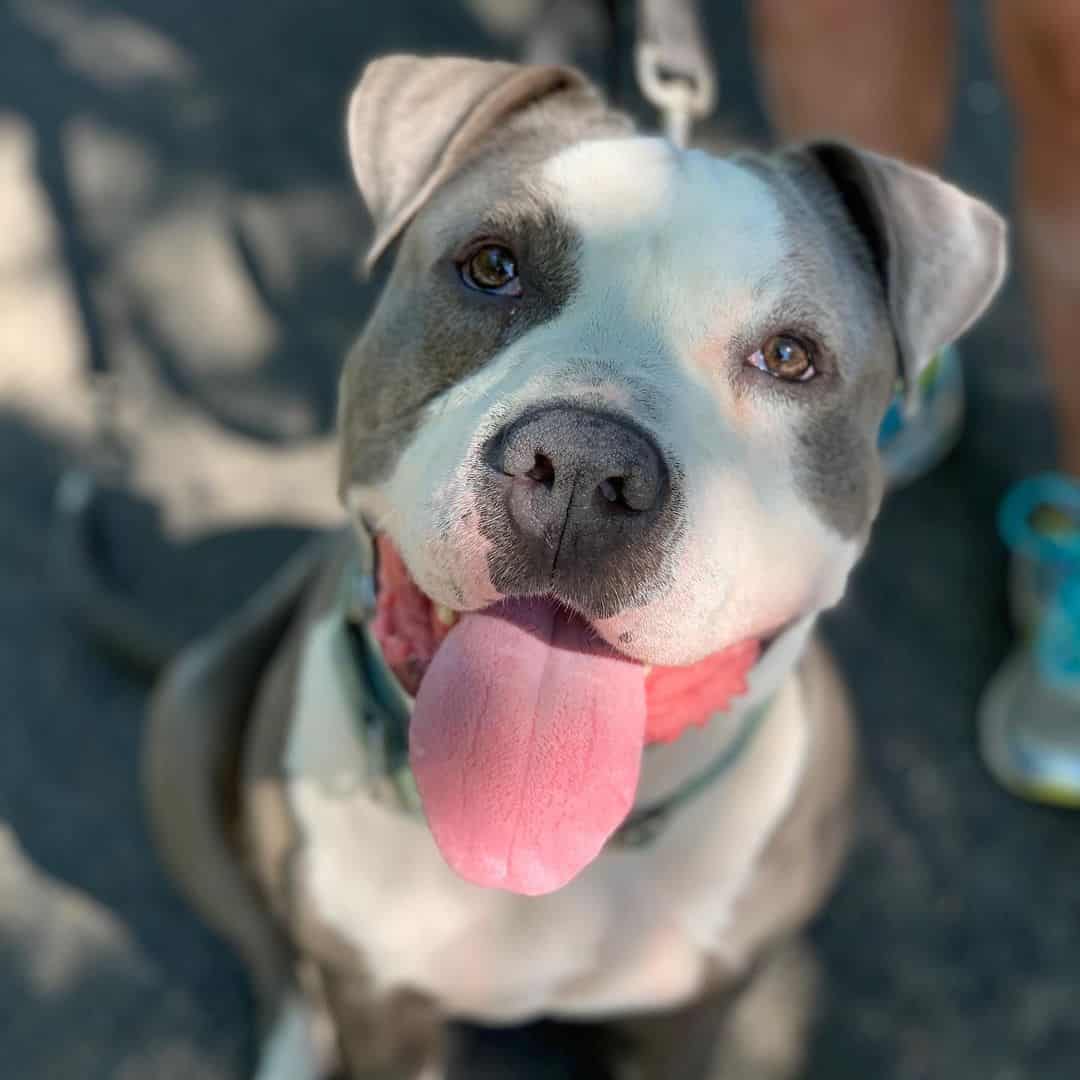
Photo from: @hitorshelter
It’s vital to learn a few things about Pitbulls before we continue with the in-depth description and analysis.
The origin of the Pitbull goes back to the 19th century United Kingdom and the Old English Bulldog that was mixed with a Terrier for fighting purposes.
The Pitbull was supposed to fight all sorts of animals in fighting competitions, including bears and bulls (which were at least twice their size).
Fortunately, dog fights were banned in 1976 with the help of the United Kennel Club (UKC). The UKC stopped supporting this cruel practice at the beginning of the 20th century, but it took decades until it was finally made illegal.
When bull baiting was banned, people discovered that Pitbulls can also be excellent nanny dogs. Fans of this breed attempted to change the public opinion about these canines, representing them as loving and loyal pet friends.
These are the four major types of Pitbulls that are acknowledged as pit breeds:
• The American Bully
• The American Pitbull Terrier (APBT)
• The Staffordshire Bull Terrier (Staffy)
• The American Staffordshire Terrier (Am Staff)
No more Pitbull in Bull?
There’s an interesting fact about these Pitbull breeds, which is related to their names.
You might have noticed that only one of the four types kept “Pitbull” as part of its full name. Although this looks like a coincidence at first, there’s a reason behind it.
Those who created the other three types intentionally left out the “Pit” part because of the stigma around the origin of the Pitbull dog breed.
Pitbulls still have a bad reputation, but it’s not nearly the same as it was in the past when they were used for dogfighting.
However, it’ll still take a lot of time for people to finally start trusting them. Some people still feel rather uncomfortable near this breed, although there’s no reason for fear.
Appearance
A short coat, a muscular build, and a wide chest are the best indicators of a Pitbull’s power.
Most people consider them dangerous because of their looks, especially because of their wide jaws that contribute to their aggressive-like looks.
The grey Pitbull differs from other dogs of the same breed in color, but that’s not the end of color distinctions.
Grey Pitbulls can also be divided into different shades that will be explained below.
Grey brindle Pitbull
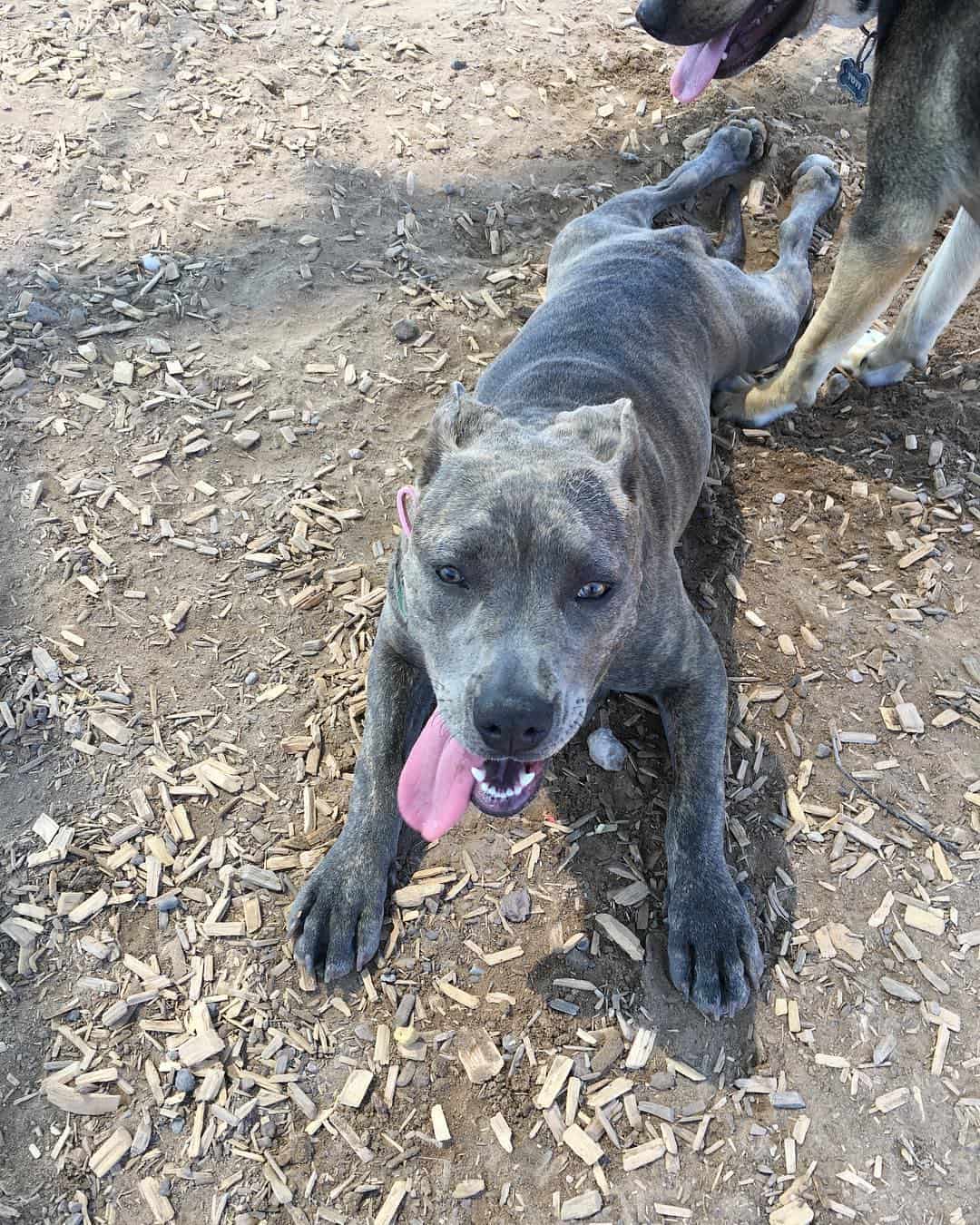
Photo from: @reigningwithhadassah
Some dogs are heavily brindled with a dark blue base color and different shades of fawn or tan stripes, while others have only a few brindle spots on their coat.
The color variation can go the other way around as well, with stripes being grey and blue, and the Pitbull’s coat covered with a light shade.
Although the chest and paws are white, the chances of white markings on the base coat are almost impossible.
Blue-Grey Pitbull
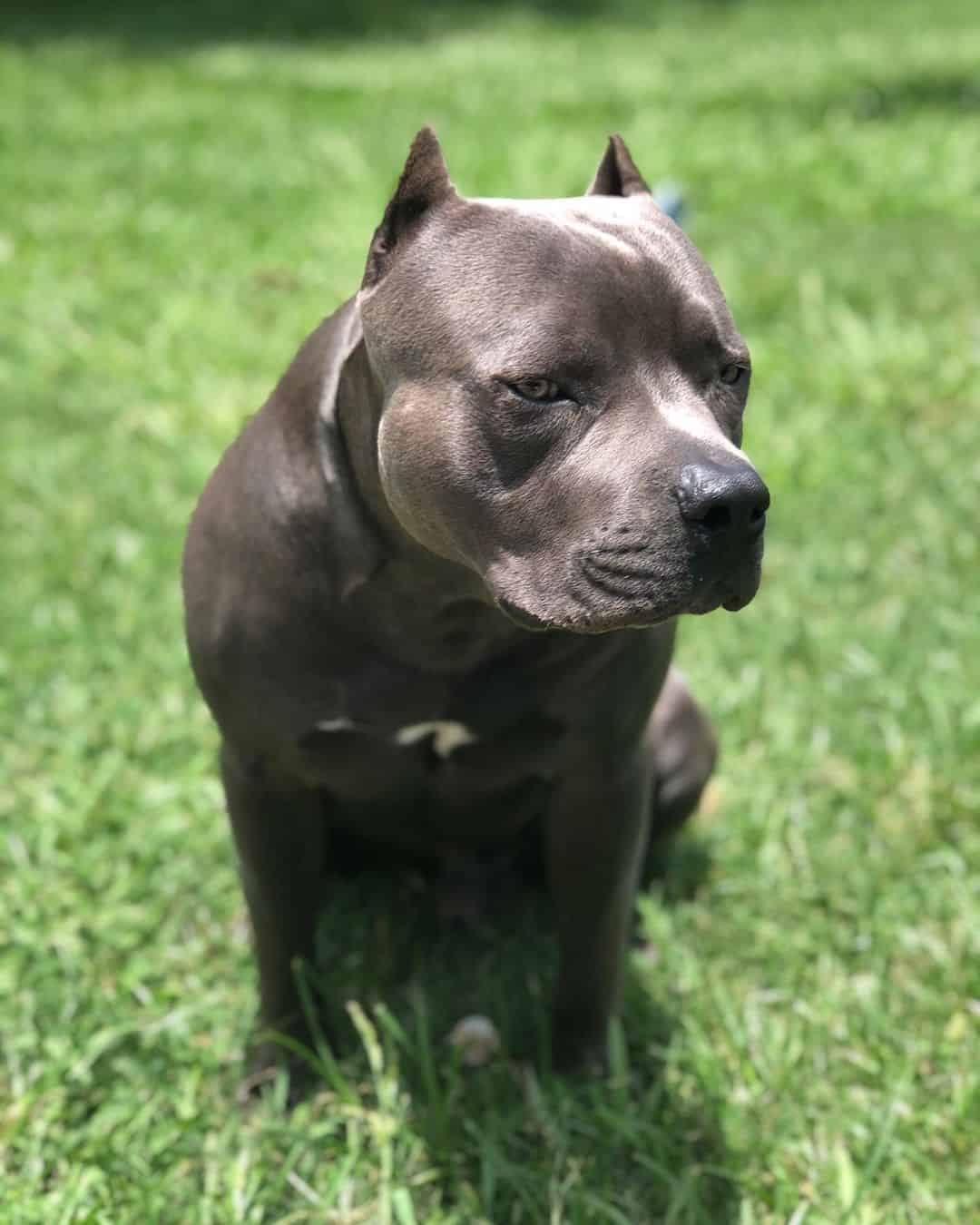
Photo from: @_roccothebully
As the name says, this is a blue and grey coat color variation that is common among Pitbulls.
However, there’s one color distinction that isn’t directly related to coat colors, although it explains why these differences appear in the first place.
The color of the nose shows the level of melanin. A red or blue nose suggests a low level of pigment, which is the consequence of the recessive gene.
Blue-Nose Pitbulls
Canines with blue nose color have their coats colored in grey or blue, but they don’t display any other difference from their peers.
Red-Nose Pitbulls
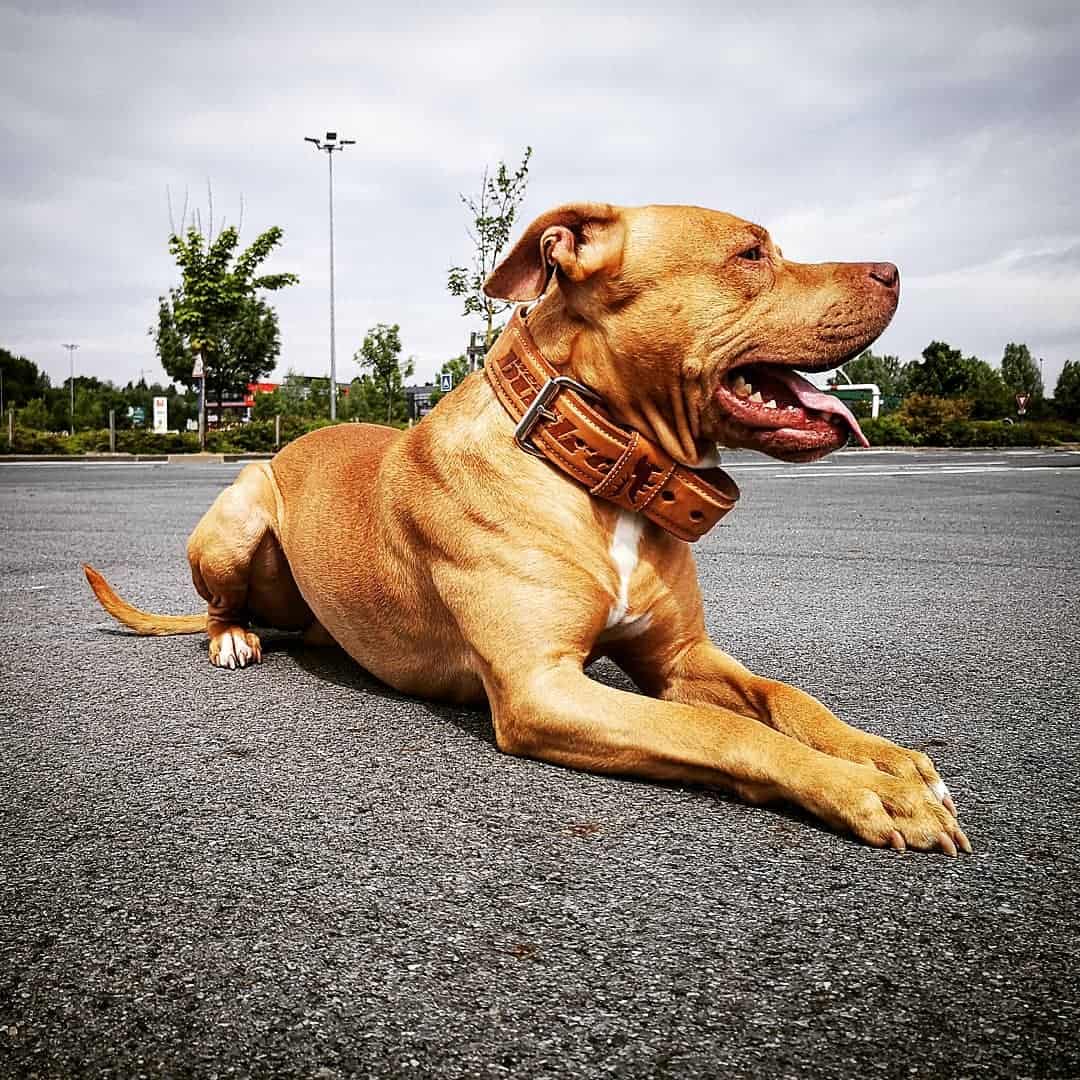
Photo from: @american_pitbull_red_nose
Most red-nosed pitties have a tan/red/orange or a silvery bluish coat color. However, this doesn’t have any impact on their behavior, size, or any other Pitbull trait.
It’s interesting to notice that although there’s no other difference between these types of dogs, the American Kennel Club’s (AKC) standard doesn’t support the “red-nosed” Am Staffs.
According to their guidelines, American Staffordshire Terriers are acknowledged only if their noses are colored blue.
Grey-Fawn Pittie
This type of Pitbull is a real charmer because of its unusual appearance. The mix of silver and blue shades create one of the most beautiful coat colors, but the true distinction is in the color of the nose.
A grey-Fawn Pitbull’s nose is colored red, which makes it easier to differentiate from Grey pitties.
Grey-Merle Pitbull
This is probably one of the most expensive Pitbulls, as it might cost up to $35,000 because they’re quite unique.
The term “Merle” is used to define a splotchy-color pattern of the dog’s coat rather than striped patches that are defined as brindle.
The Merle Pittie isn’t a common sight among Pitbulls, which is no surprise, considering that this type of Pitbull is intentionally bred to achieve these colors.
Grey-Tricolor Pitbull
I was surprised when I first discovered how many variations in colors are among Pitbulls, but this only confirms how special this dog breed really is.
Grey tricolors are also considered unusual because their coat is typically covered by three different coat shades.
White and tan coat patches can be found on the dark blue base, or any other part of the body (including legs, chest, nose, feet, etc.)
White and grey Pittie
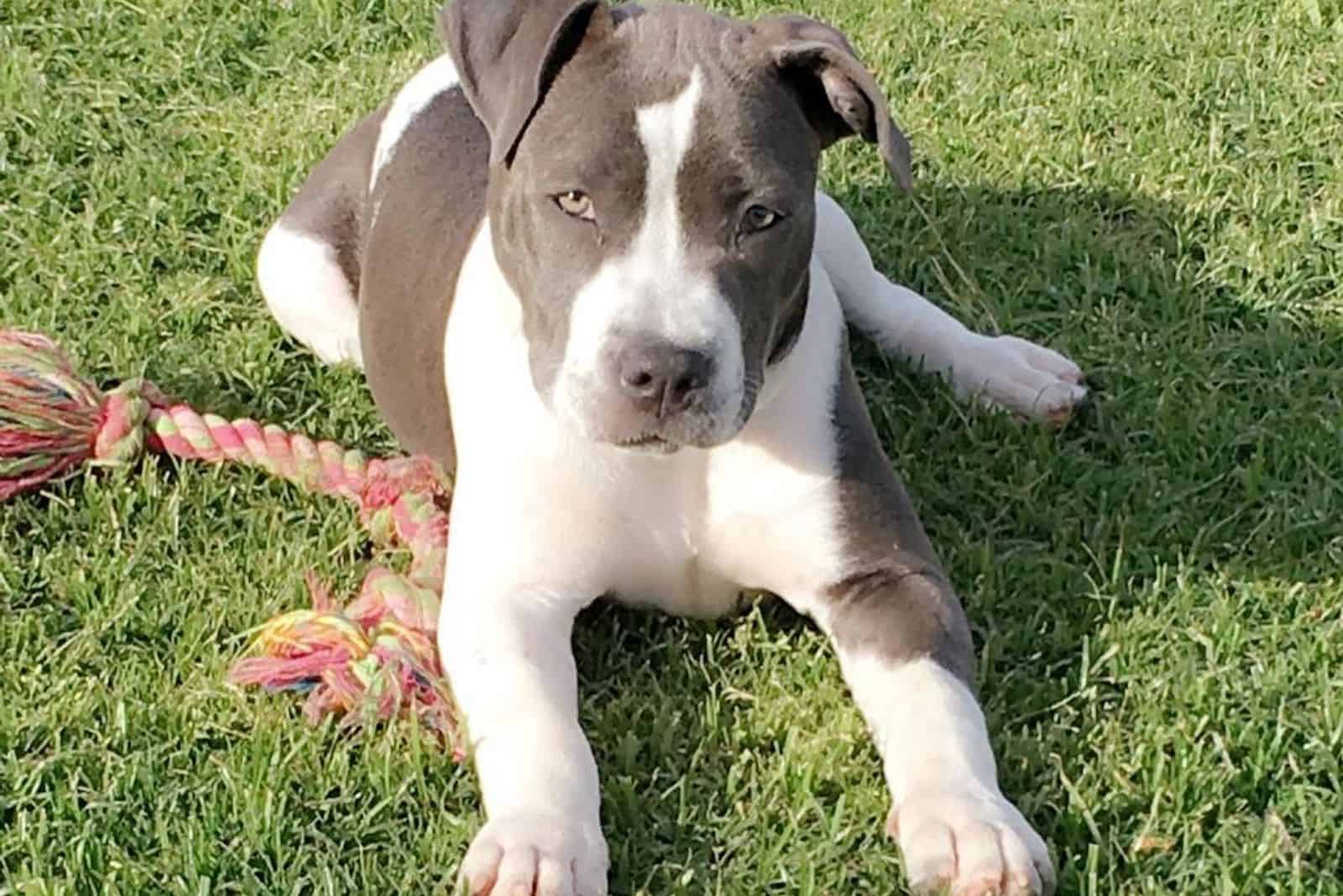
Photo from: @kimfromcalifornia
There’s a common belief that white color isn’t acknowledged by kennel clubs, although this isn’t necessarily true.
White Pitbulls (those that have over 80% of white color on their coats) have been perfectly acceptable by the UKC since 1989.
However, the AKC does have strict rules about Am Staffs, not acknowledging those that have a majorly white coat.
A pale coat might be sun-sensitive, which can result in various types of skin conditions.
This is important information for future owners who’re planning to raise a white and grey Pitbull – if you’re not ready to take special care of a majorly white Pitbull, a grey Pitbull might be a better solution.
Which pitbull color is the rarest?
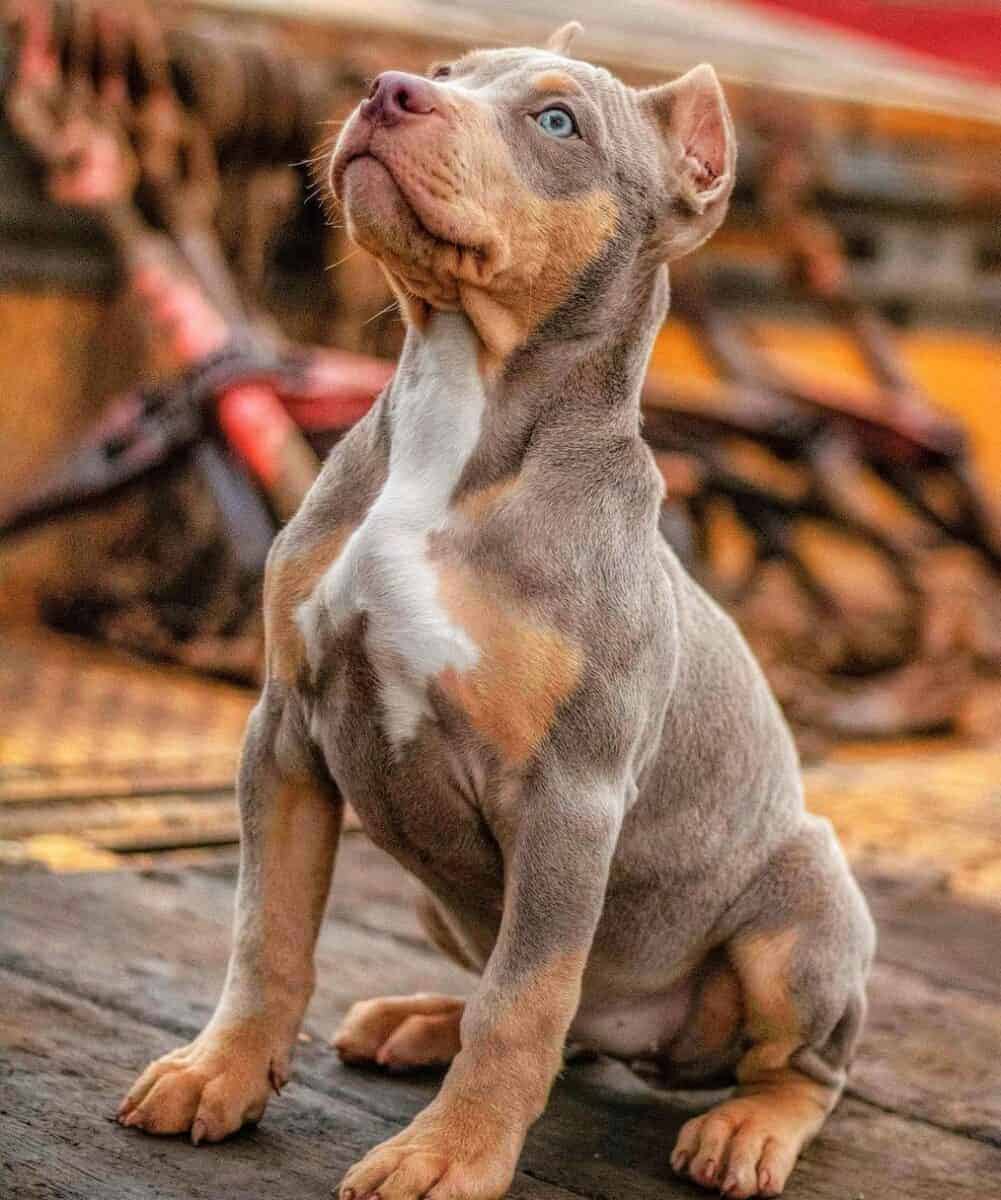
Photo from: @enhancedk9
Every dog is beautiful and unique in its own way, but if the choice is based on the rarest shade of Pitbull, it would be the Grey Tricolor Pitbull.
The main reason why this type of Pitbull is recognized as the more unique one is that breeders couldn’t find the right way to create them until recently.
The crucial point of the whole process is finding two Pitbulls with recessive genes that’ll become parents of a tricolor pittie. This is a double-edged sword for many breeders because it may result in one of the rarest-colored dogs or a canine with various health issues caused by the request for rarer coat patterns.
On the other hand, it would be unfair not to mention the merle-colored Pitbulls, which are also quite rare among their breed.
Some people might not recognize merle pitties as purebred Pitbulls because this gene can’t be achieved unless the bully breed is mated with other types of dogs.
Size
They might look rough on the outside, but they’re real sweethearts inside! Most Pits have a bad reputation because of dogfighting or other dangerous and illegal sports, although none of it’s their fault.
This dog breed is one of the best examples of how looks can deceive. Even though they’re massive in size, pitties can be amazing family dogs.
If you have ever dreamed of getting a grey Pitbull pup, there’s no need to hesitate.
In case you’re wondering how big a Grey Pit might become, here are the approximate measurements of each Pitbull type:
American Pitbull Terrier – The original version of Pitbull can weigh anywhere from 30 to 65 lbs, and can grow up to 21”.
American Staffordshire Terrier – These amazing doggies weigh from 40 to 70 lbs. When it comes to height, they’re usually somewhere between 17” and 19” tall.
American Bully – The size of Bullies can be divided into three different stages: Pocket size (13” to 17” tall), Standard size (16” to 20” tall), and XL size (19” to 23” tall). If you’re planning to get a Bully, you should consult with the breeder about the potential growth of the canine in order to prevent any unpleasant surprises.
Staffordshire Bull Terrier – This is considered the smallest type of Pitbull, as it grows only up to 16”, and weighs from 24 to 38 lbs. This Pitbull breed is perfect for those who’re looking for more petite canines.
Are Grey Pitbulls prone to shedding?
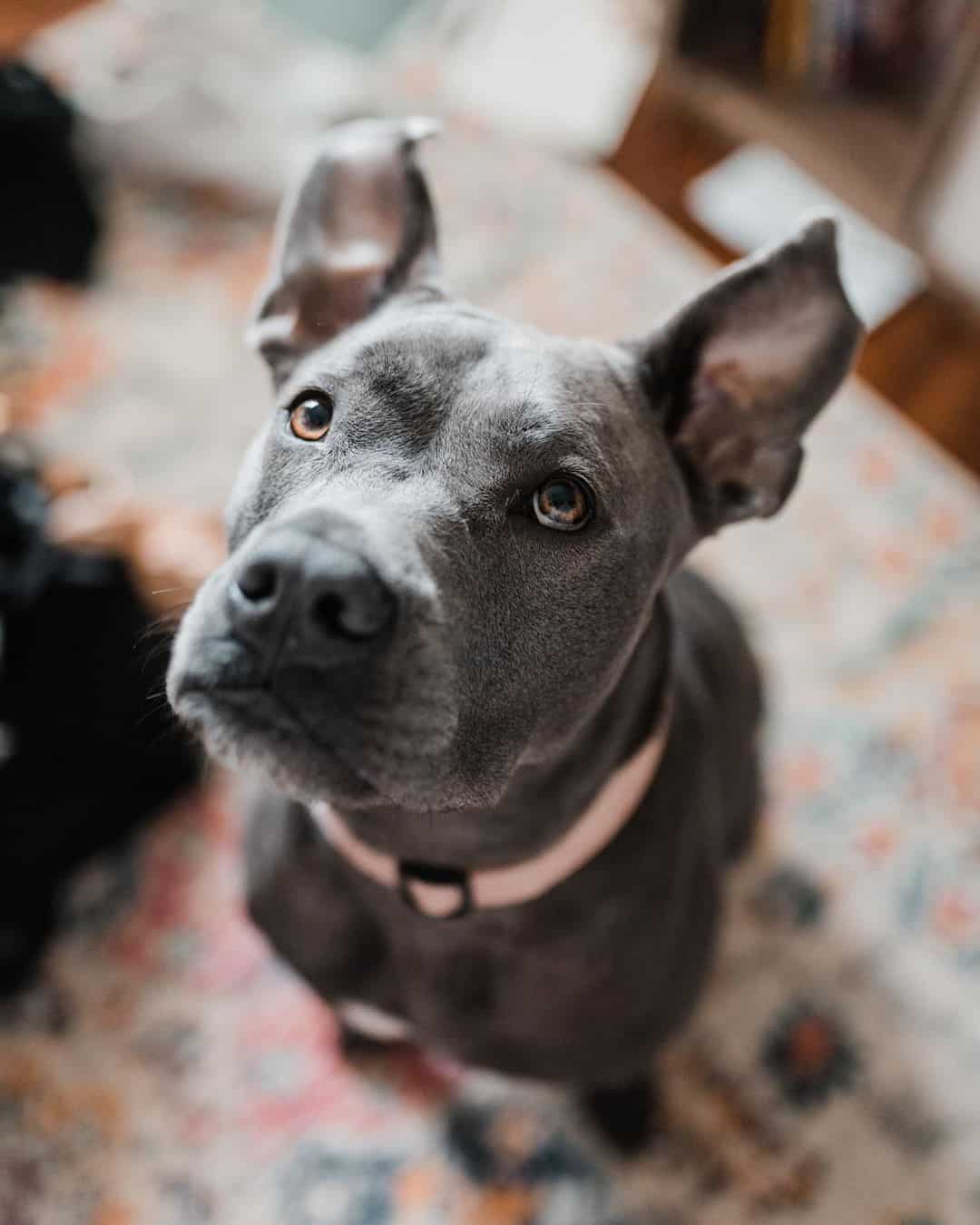
Photo from: @thepeltonpitties
Grey pitties shed just as much as any other type of Bully.
One of the most common misconceptions about Pits is that they don’t shed just because their coat hair is short.
It’s true that these dogs might be easier to groom because you don’t have to do it too often, but you might find grey hairs on your sofa or carpet at times.
Seasonal shedding definitely causes more hair around the house, but don’t be surprised if your dog sheds throughout the year as well.
Although shedding is a natural process as your dog has to get rid of the excess hair from its coat, there might be other reasons that might require further consultations with the vet.
An unhealthy diet, food allergies, traumas, or any kind of stress might be a trigger for shedding. If you notice any unusual behavior or possible symptom, you should call the vet as soon as possible.
Are Grey Pitbulls Good Family Dogs?
Pitbulls aren’t the first choice for a family dog, especially for first-time owners because of the common prejudices about these dogs.
But, if you give them a chance, Pits can change your mind in a matter of seconds.
These beautiful and strong animals have proven themselves as great guard dogs and loyal furry friends that turn into adorable pups every time you start cuddling them.
Pitbulls generally seem tough because they’re big and muscular, and grey Pits aren’t an exception. Unfortunately, their looks are usually what make people think of them as aggressive and unfriendly.
Of course, not all Pits are friendly or used to people, which might result in aggressive behavior and a potential physical attack.
Still, it’s important to mention that this type of action isn’t caused by genetic or innate canine behavior, but rather as a result of past trauma or a bad relationship with the owner.
Good training and a lot of love will turn your pittie pup into the best dog for you and your family.
Socialization is an important part of the training program from the puppy’s earliest days, which is why it’s crucial to find a reputable breeder who’ll prepare the pup for other dogs and young children; the most vulnerable category that’ll be around them.
I’m sure your dog will be one of the bright examples that show how great Pitbulls can actually be.
A great number of pit enthusiasts are working hard to prove that this dog breed deserves to be treated equally as all other breeds that are found suitable as family pets.
Pits are very emotional and sensitive… they’re cute and eager to socialize with people, especially kids. Some people claim that Pits are also great nanny dogs because they’re good with children.
Potential health problems
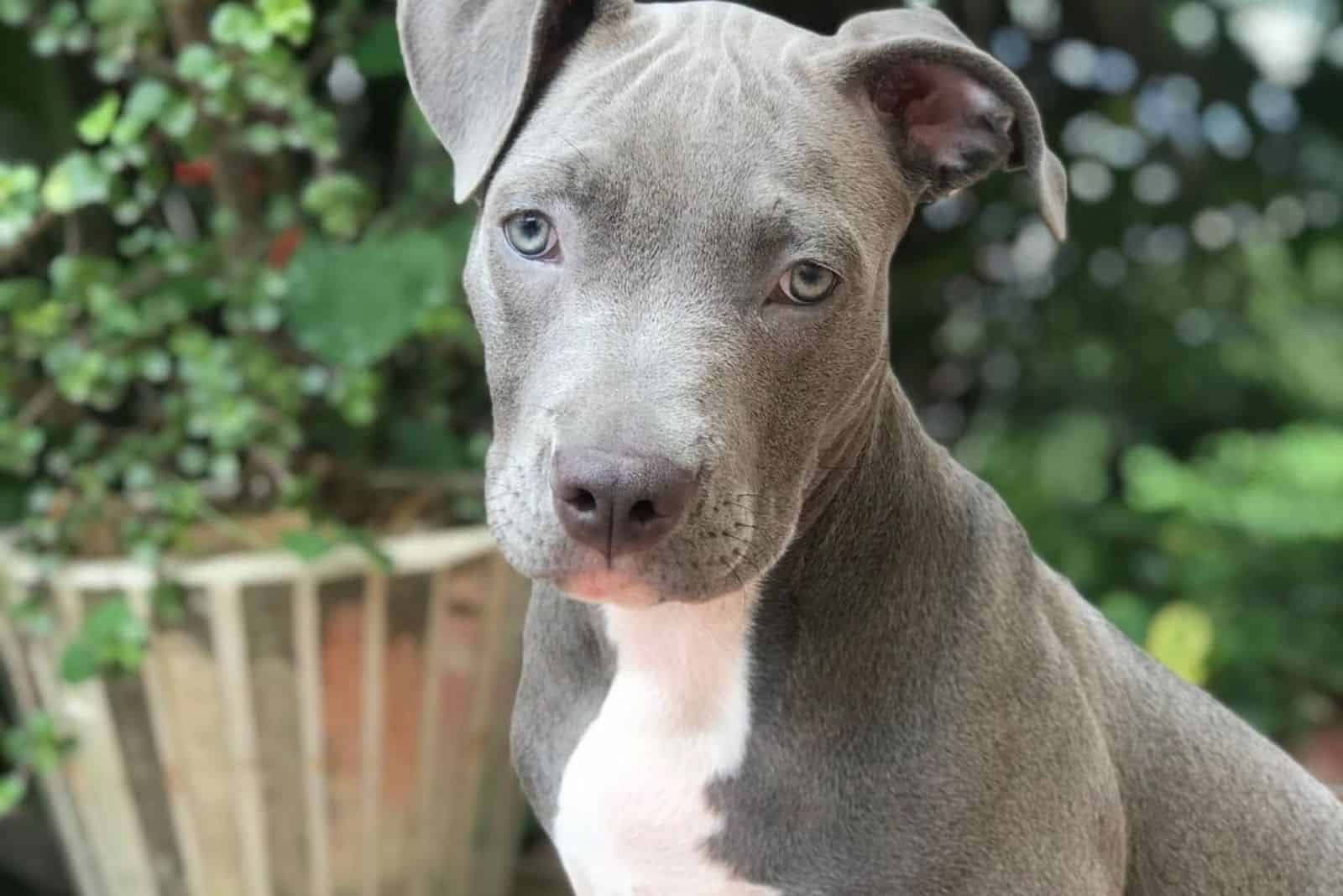
Grey Pitbulls aren’t a separate breed; therefore, all Pitbull characteristics, including their medical issues, are shared among this type of dog.
The average lifespan of this breed is about 12 years, although, in some cases, they live up to 18 years in total.
The length of their life depends on how the owner treats the dog. If you take good care of your pittie, it’ll live much longer.
Unfortunately, there are some medical conditions that might impact the length of the grey Pit’s life, or its quality. Here are some of the most common health issues that grey Pitbulls might have to deal with:
• Skin conditions – Pits are prone to various skin diseases and allergies that can be caused by various treatments, stress, anxiety, etc. Some of the most common symptoms of skin conditions are scratching, hair thinning, and swelling of the joints, legs, or even the face.
In case you notice any of these symptoms, you should consult with a medical professional as soon as possible.
• Food allergies – No matter whether they’re grey, white, brown, or black Pitbulls, these canines are known to be allergic to different types of food, including meat (pork, lamb, fish), wheat, and dairy (milk, yogurt, cheese, etc.)
The best way to recognize any food allergy is to check for the symptoms, such as paw biting, vomiting, diarrhea, nausea, hives, and others.
• Hypothyroidism – This condition happens quite often in dogs, and it represents the degradation of bodily functions because the thyroid gland in the neck doesn’t offer enough hormone production for the whole body.
If you notice black patches, flaky skin, coat thinning, or sudden weight gain, there are high chances your pet has this condition.
• Hip dysplasia – This hereditary condition is quite common among other dog breeds as well, which is why most reputable breeders do certain tests that show whether the puppy has any potential for the development of this condition.
If it’s not treated in time, this condition may cause even more serious issues, such as muscle atrophy, poor circulation, or arthritis.
• Deafness – This condition is generally related to the color of the dog’s coat. In this case, the lighter the Pit, the more chances it’ll develop symptoms at an early age.
Not all white-colored dogs become deaf, but there’s still quite a good chance for partial or complete deafness later in life.
Grey Pitbull Blue Eyes Mix
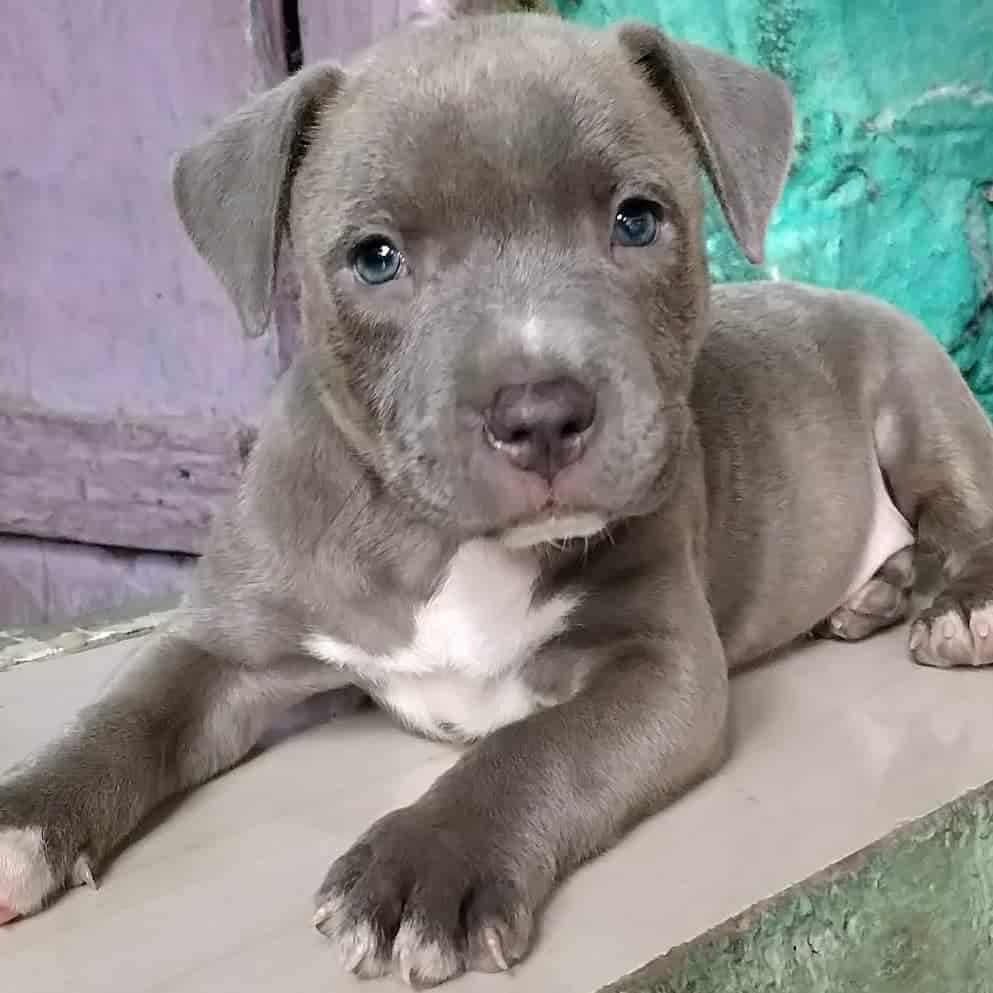
Photo from: @blue_eyed_pitbull_
Most Pitbull owners have certainly noticed that the blue eye color of their pit pups turned into a dark brown shade at one point in their life.
Of course, this doesn’t happen overnight, but most people don’t notice any gradual transition until the color has completely changed.
Blue eyes at birth are the result of low melanin levels in the eyes.
Almost every pit puppy is born with this eye color, but most of them lose it as soon as the melanin starts to produce.
Some canines might keep the blue eye color permanently, but it can turn into any shade from light brown to a dark hazel color.
There’s no direct connection between blue eyes and any major disease, but it’s believed that a pit with this eye color might develop some sort of health issue later in life.
If you have an adult blue-eyed grey or blue Pit, there’s no need to fear, especially if you got it as a pup from a trustworthy breeder.
Price Of Grey Pitbulls
Grey Pitbulls are quite rare, which means you’ll have to pay more to get one. The price of blue-nosed Pits can go anywhere from $2,000 to $10,000 depending on the bloodline and the breeder.
If you’re looking for a more affordable pitty, you can find a red-nosed, blue-fawn Pitbull that’ll cost you somewhere between $800 and $5,000.
There’s a high demand for blue-nose Bullies, which is why they’re much more expensive than the red-nosed ones.
However, keep in mind that this isn’t the only cost you’ll have. During the first year of your pup’s life, you’ll spend a fair amount of money on vaccinations, examinations, licensing, food, and other necessary supplies.
The pit’s price might seem high at first, but you’ll forget all about it as soon as you see your adorable grey pup.
Grey Pitbull Puppies For Sale
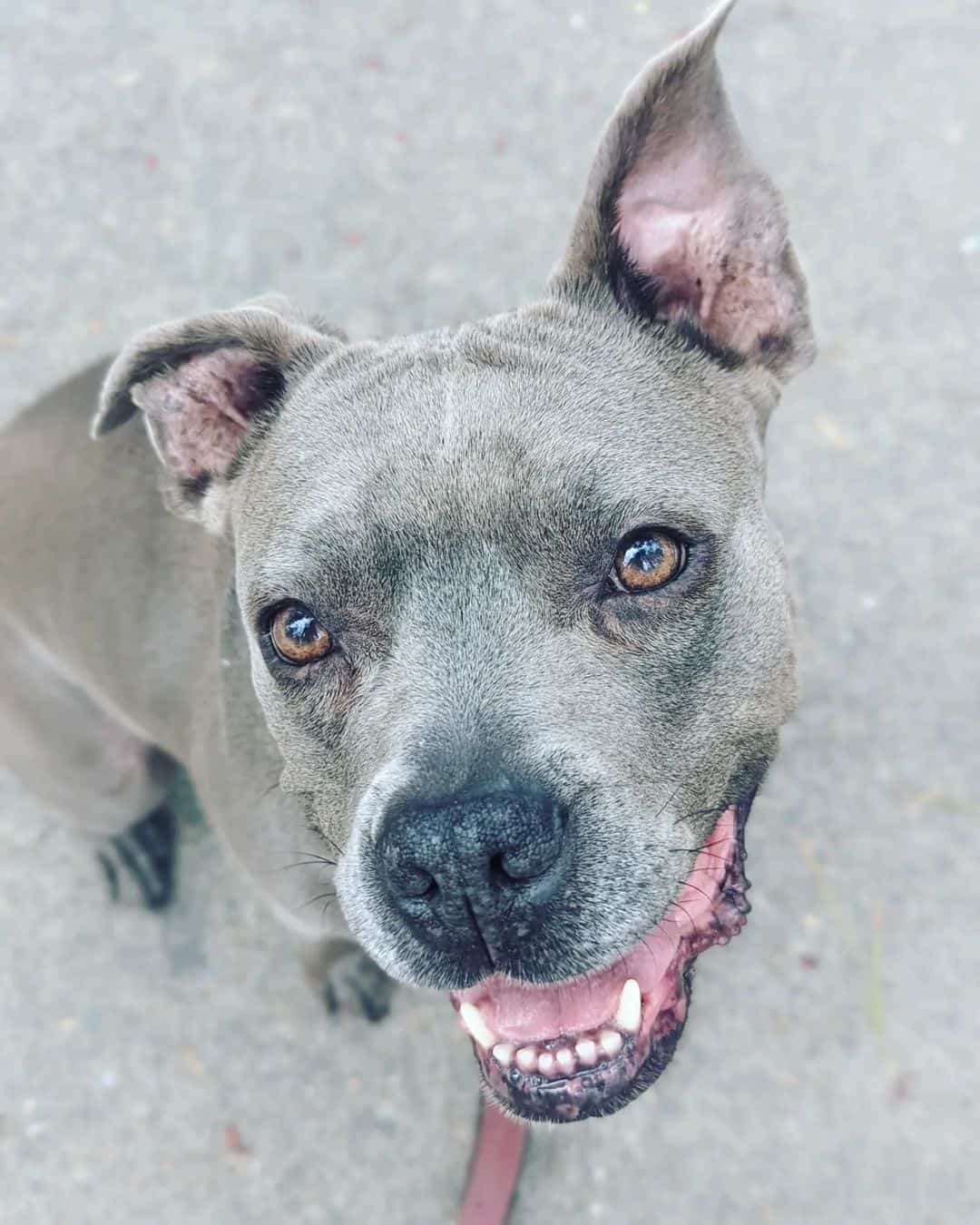
Photo from: @rosiemeatypiggyzuul
If you have decided to get a grey Pitbull, it’s time to find some trustworthy breeders!
A professional breeder is a crucial point in every dog search. A good breeder will provide you with a great puppy, and will prove it with all the necessary documents and certificates.
If you don’t know where to begin your search, here are a few great breeder suggestions:
Butler’s Blue Bullys
This is a Texas-based kennel that’s also known as the “Triple B”.
At this place, you’ll be able to find beautiful blue/grey tricolors, brindles, and other colors. The owners of this facility have been surrounded by pitties for more than 13 years, and they’re still enthusiastic just like they were when they first started this business.
If you’re interested, you can check out their website for more information or reach out to them via phone.
Address: Laveria, Texas
Website: Butler’s Blue Bullys
Phone: (830) 534-5597
Email address: [email protected]
Blue Fire Pits
If you’re looking for a massive Pit, Upstate New York is the right place to be! This breeder has been producing supreme XXL Pitbulls for more than 15 years, and continues doing so with some of the most adorable blue and grey puppies!
They’re mainly focused on these colors, but they do offer other shades as well, including fawn, white, brindle, tricolor, and black Pitbulls.
Future owners of their puppies receive UKC documentation, along with vaccination and health certificates, as well as a two-year health warranty.
Each of the pups is introduced to children and other dogs (even older ones) so you don’t have to worry about adaptation to the family and your home.
You can find more details on their website, and contact them over the phone or email if you’re interested in getting a great pitty!
Address: Upstate, New York
Website: Blue Fire Pits
Phone: (607) 229-8737
Email address: [email protected]
Mixed Breeds
Mixed breeds aren’t welcomed by those who are looking for purebred champions, although they’re quite popular among regular dog owners who want a family dog.
Here are some of the most interesting mixes that’ll attract your attention:
Greyhound Pitbull mix
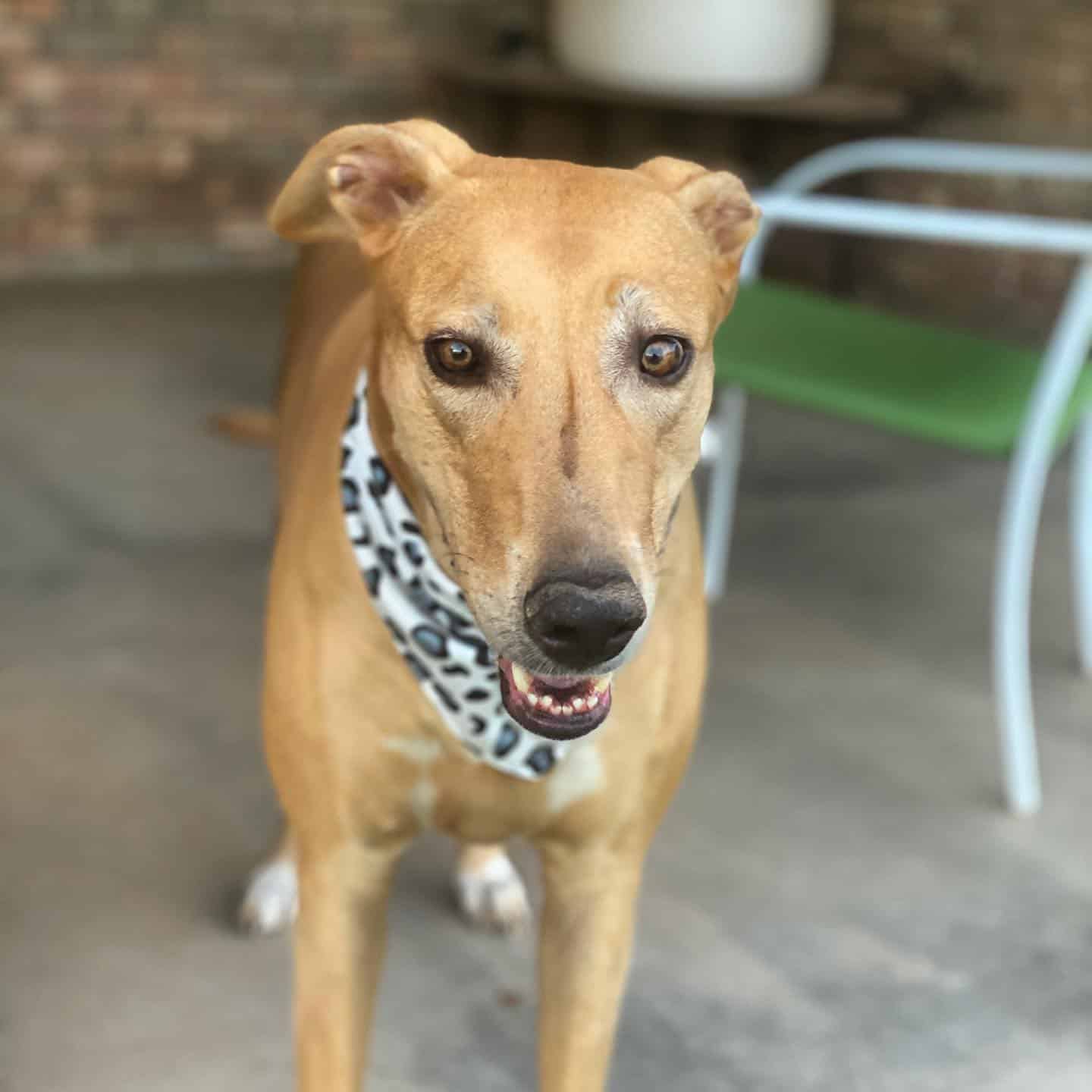
Photo from: @princessleia.thegreyhound
I’m sure you can already guess the combination that led to the creation of the Greybull Pit, but I’m still going to mention that the Greybull pit happened as a result of the Greyhound and the American Pitbull Terrier dog mating.
Grey bulls are emotional and sensitive, and they rarely manifest any type of aggressive behavior, which is why they’re a great choice for family pets.
The price of this unusual mixed-breed dog goes up to $1,200, but it generally depends on the overall quality of the puppy and the trustworthiness of the breeder.
Grey Pitbull Lab mix
A combination of a Labrador and the American Pitbull Terrier sounds unimaginable at first until you see those wonderful eyes and that adorable dog face!
This unique breed is known as a Labrabull, a Bullador, or a Pitador (Retriever).
The Labrabull is an amiable and loyal pet that will lift your spirits up with its positive energy and happiness! This dog will surely be a great fit for your family.
Conclusion
Grey Pitbulls are essentially just Pitbulls with a grey colored coat. Their size and temperament aren’t any different than that of a blue-fawn or a brindle pittie.
The main difference might be the price because of the rarity. Grey Pits aren’t as common as red-nosed Pitbulls, although this situation is slowly changing.
A lot of potential pitty owners are looking for a blue/grey pit with a blue nose, which has resulted in more breeders breeding this type of pit.
Remember, grey Pitbulls aren’t a separate breed. Still, there are mongrels that might not be acknowledged as standard breeds, such as the Labrabull, the Rottweiler pit, the Husky pit, and others. However, don’t confuse the Bullmastiff breed with mixed-breed canines just because the name consists of “bull” and “mastiff”.
In this case, “bull” stands for dogs with large bones, and not Pitbull, as some people might have thought.
I hope this article was a good introduction to the next chapter in your life as a grey pitty owner.
Good luck!
Read Next:
• Top 7 Reputable Pitbull Breeders In Texas
• A Long-Haired Pitbull Is Short Of A Miracle
